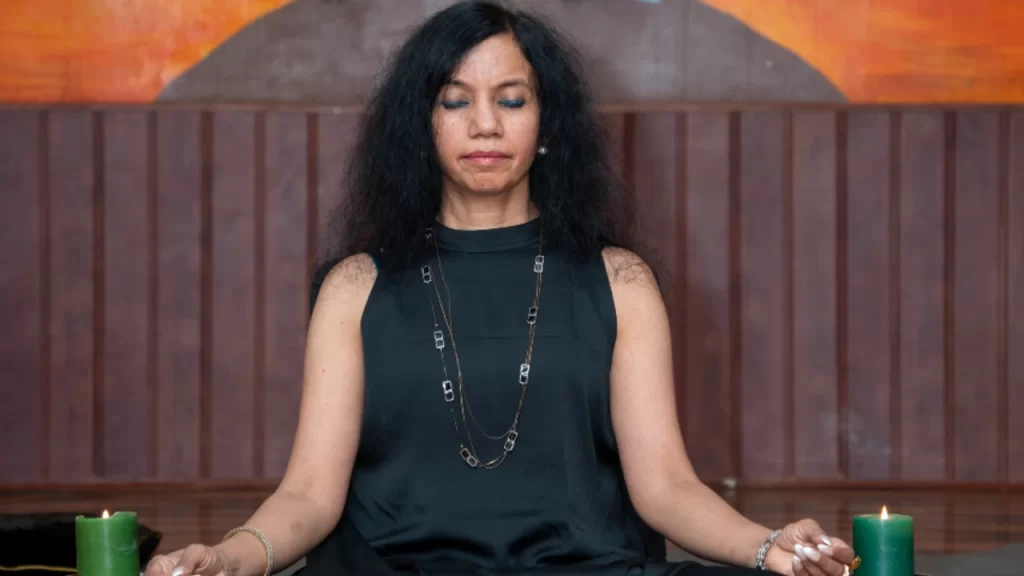Yoga therapy is a comprehensive treatment method that integrates old yogic knowledge with modern medical techniques to increase physical, mental and emotional welfare. Unlike general yoga practice, yoga therapy suits a person’s specific health requirements and offers a structured and individual passage for treatment. The principles of yoga therapy serve as the basis for this exercise and guide doctors to utilize the intense benefits of yoga for health and welfare.
Understanding the Principles of Yoga Therapy
The principles of yoga therapy are based on the belief that the body, the mind and the soul are interconnected. These principles insist on curing self-awareness, balance and congenital capacity in the body. Below are the main principles of yoga therapy that form the basis for this transformative practice.
Individualized Approach
One of the basic principles of yoga therapy is that each person is unique. Unlike traditional yoga classes, yoga therapy is adapted to a person’s physical health, emotional state and specific diseases. A doctor assesses the individual’s needs and designs a program that includes asana (currencies), pranayama (breathing control) and attention techniques, that fit their position.
Mind-Body Connection
An important aspect of the principles of yoga therapy is the emphasis on the mind-body connection. Yoga therapy accepts that mental and emotional stress can manifest itself as physical diseases. Through meditation, deep breathing and relaxation techniques, individuals can effectively handle stress, and promote general well-being. This principle corresponds to alchemy energy healing, where the health flow is balanced to restore health.
Breath Awareness and Regulation
Pranayama, or respiratory control, is an important element of yoga. The principles of yoga therapy emphasize the importance of intentional breathing to regulate the nervous system, reduce stress and increase vitality. Alternative next bids, techniques such as breathing in the membrane and couples help to detoxify the body and promote mental clarity.
Holistic Healing Approach
The principles of yoga therapy make lawyers for a holistic approach to therapy, incorporating movements, breathing, mindfulness and lifestyle changes. This integrated method considers diet, sleep patterns and daily habits to ensure a comprehensive healing process. This life coach India is the concept of India, where coaching techniques are used to guide individuals toward better mental and emotional health.
Balance and Harmony
Getting balance in the body and mind is an important part of yoga. The principles of yoga therapy focus on the harmony of energy channels, improving flexibility and reducing pain. Yoga therapy helps restore balance and prevent the disease by incorporating mild movements and restructuring poses.
Preventive and Curative Aspects
Yoga therapy meets both preventive and medical goals. The principles of yoga therapy emphasize strengthening the immune system, improving digestion and increasing circulation to prevent diseases. For those who are already suffering from chronic situations, yoga therapy provides technology to deal with symptoms and improve the quality of life.
Emotional Well-being and Stress Reduction
Emotional goodness is the cornerstone of yoga. The principles of yoga therapy highlight the role of mindfulness and meditation in reducing anxiety, depression and stress. By promoting self-awareness, individuals learn to understand their feelings and develop flexibility. This corresponds to life counseling, where emotional guidance helps individuals navigate individual challenges.
Self-Empowerment and Awareness
Yoga therapy encourages individuals to take responsibility for their own treatment process. The principles of yoga therapy promote self-insight through continuous practice and help individuals identify the forces and areas that require improvement. Through guided exercises, individuals cultivate mindfulness, the spirit of inner peace and control their good.
Use of Props and Modifications
Yoga therapy often includes props such as bolsters, straps and blocks to support treatment. The principles of yoga therapy are advocating modifications to ensure that each person practices safely and efficiently. This approach makes yoga accessible to people of all ages and abilities, including recovering from injuries or dealing with chronic pain.
Energy Flow and Chakras
An important part of yoga therapy involves balancing the energy centers in the body, known as the chakras. The principles of yoga therapy emphasize the importance of cleaning energy barriers through specific poses and breaths. This concept is closely related to healing stone therapy, which uses crystals to restore energetic harmony and increase goodness.
Integrating Yoga Therapy into Daily Life
To embrace the principles of yoga therapy, stability and mindfulness are of utmost importance. Here, yoga therapy gets some practical ways to integrate into its routine:
- Morning stretch and breathing work: Start the day with careful stretching and deep breathing to activate the body and mind.
- Mindful movement: Include yoga asana throughout the day to improve attitude and relieve stress.
- Evening relaxation: Finish the day with attention and restoration to promote deep relaxation and better sleep.
- Self-confidence: Ironing and self-use practice can increase self-awareness and personal development.
The Role of Yoga Therapy in Family Healing
Yoga therapy is not limited to personal treatment; It can also strengthen family bonds. The principles of yoga therapy encourage group practice that promotes emotional conditions and mutual support. Families that engage together in yoga improve communication and reduce the level of stress. It is consistent with family constellations, a therapeutic approach that examines ancestral treatment and emotional patterns in the family’s dynamics.
Conclusion
The principles of yoga therapy provide a comprehensive guide to general therapy, which emphasizes the relationship between the body, the mind and the soul. By incorporating personal training, respiratory joints, mindfulness and energy balance technology, yoga therapy provides a transformative route for welfare. As preventive health is used for stress reduction or emotional treatment, yoga therapy provides opportunities to take responsibility for your health and carry a balanced, harmonious life. By integrating these principles into daily life, no one can unlock the full potential of yoga as a medical practice and a lifetime.
FAQ’s
What is the principle of yoga therapy?
The principles of yoga therapy focus on overall therapy by integrating the physical approach, the airways and mindfulness to restore the balance between body and mind. Unlike general yoga practice, yoga therapy matches individual needs, addresses specific health conditions and promotes self-efficacy. This emphasizes ideas of ideas, stress reduction and regulation of energy to increase general welfare. By incorporating relaxation techniques, attention and personal changes, yoga therapy helps to prevent and manage different diseases. The also encourages emotional flexibility and self-powerful principles of yoga therapy, which is a transformative approach to achieving long-term physical and mental health.
What are the 5 principles of yoga?
The principles of yoga therapy are based on five main aspects that promote general welfare:
- Proper exercise (asana): Physical attitudes improve general health, improving flexibility, strength and circulation.
- Proper breathing (pranayama): Controlled breathing technology regulates energy flask and reduces stress.
- Proper relaxation (Savanna): Residual practice helps relieve stress and promote treatment.
- Proper diet: A balanced, nutritious diet supports physical and mental welfare.
- Positive thinking and meditation: Mindfulness and meditation cultivate inner peace and emotional stability.
These principles of yoga therapy help individuals achieve harmony between body, mind and soul for long-term health benefits.
What are the basics of yoga therapy?
The principles of yoga therapy focus on the use of yoga as a medical tool to restore balance and promote treatment. Include individual exercises, where currency and breathing techniques are suitable for a person’s health requirements. Breathing control (pranayama) increases energy and reduces stress, while meditation and mindfulness improve mental clarity and emotional stability. Gentle movement and Asanes help to reduce pain, increase flexibility and strengthen the body.. Residual technology promotes deep therapy by reducing cortisol levels. By following the principles of yoga therapy, individuals can achieve physical, mental and emotional welfare through a holistic and structured approach.
What is the nature of yoga therapy?
The principles of yoga therapy emphasize a comprehensive approach to therapy, focusing on the mind-body connection to restore balance and well-being. Unlike traditional agents, yoga therapy integrates movement, breathing control, attention and mindfulness to address physical, mental and emotional health. It is very individual, and adapted to personal needs and conditions, as it is effective for stress, chronic pain and handling various diseases. The principles of yoga therapy also highlight self -self-understanding, encouraging individuals to cultivate inner peace and flexibility. By promoting harmony in the body and brain, yoga therapy acts as a natural and durable method of long-term treatment and well-being.







Leave a Reply